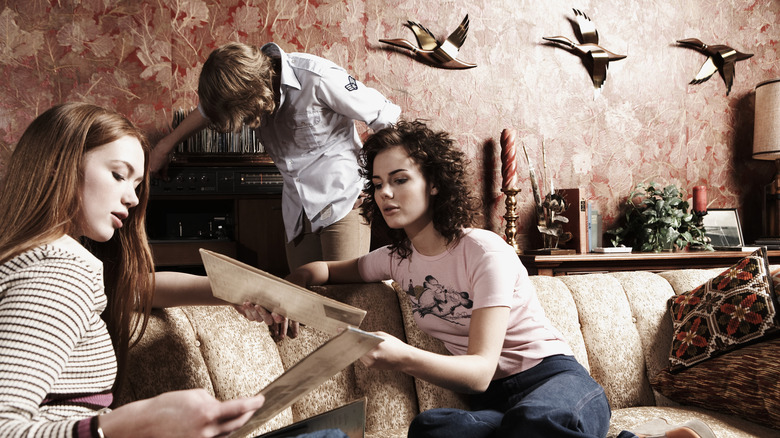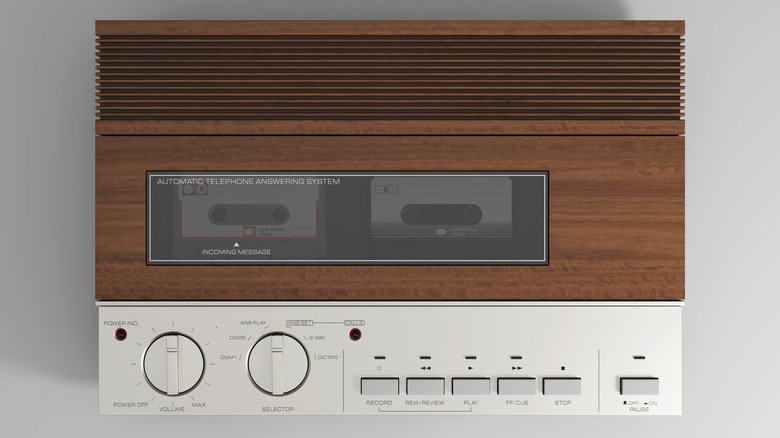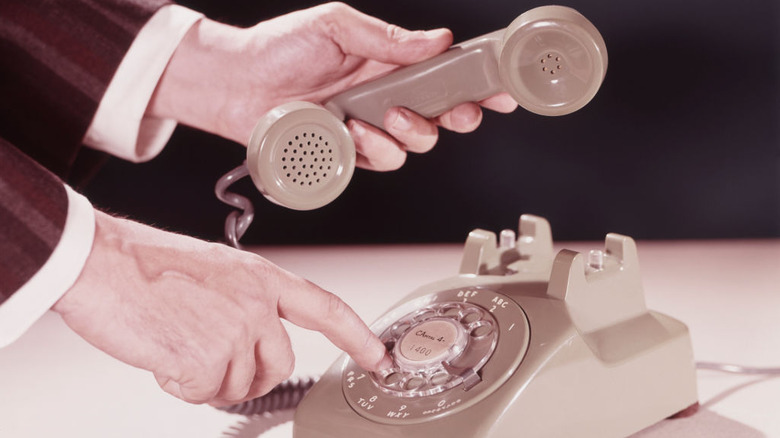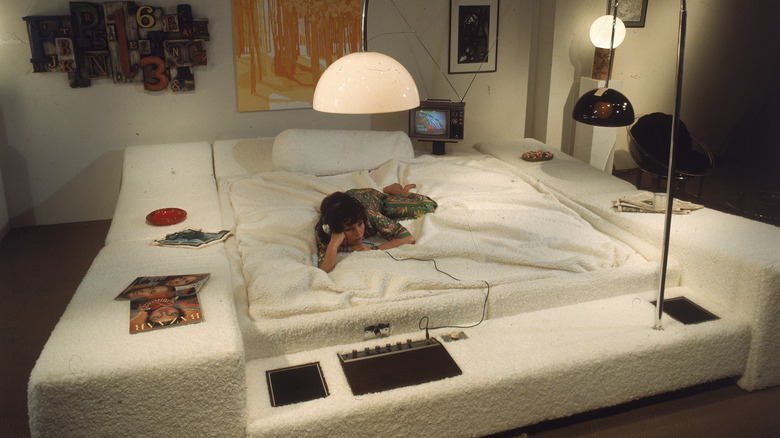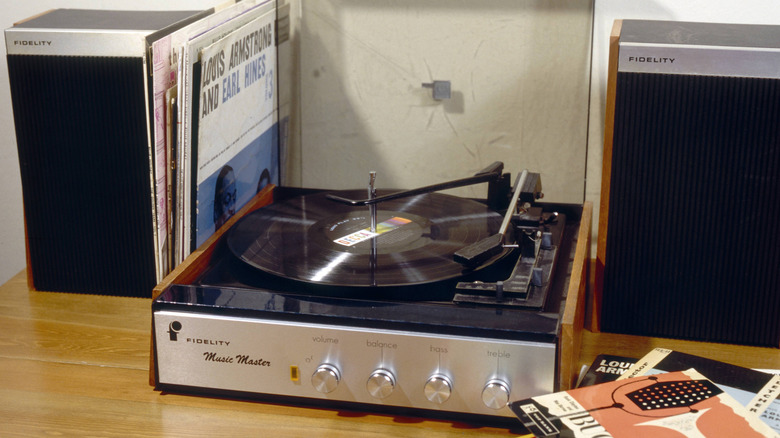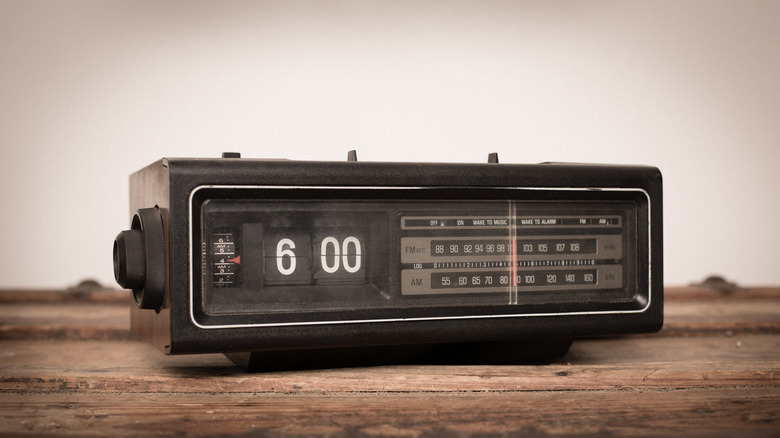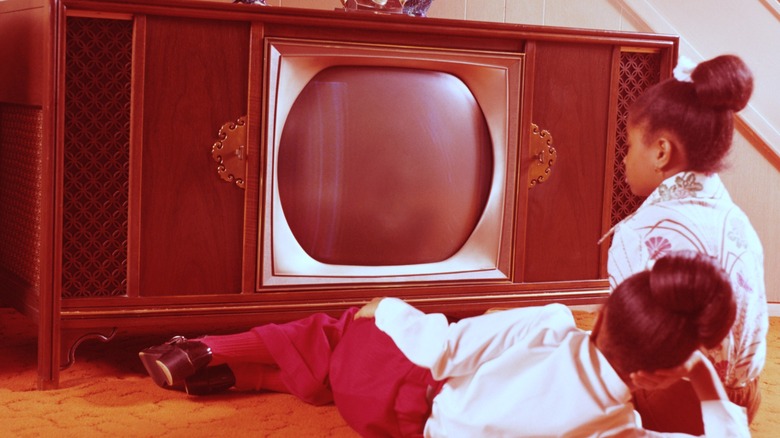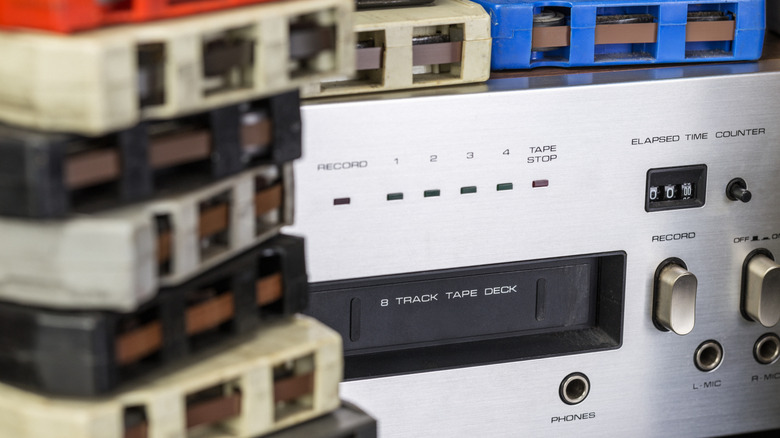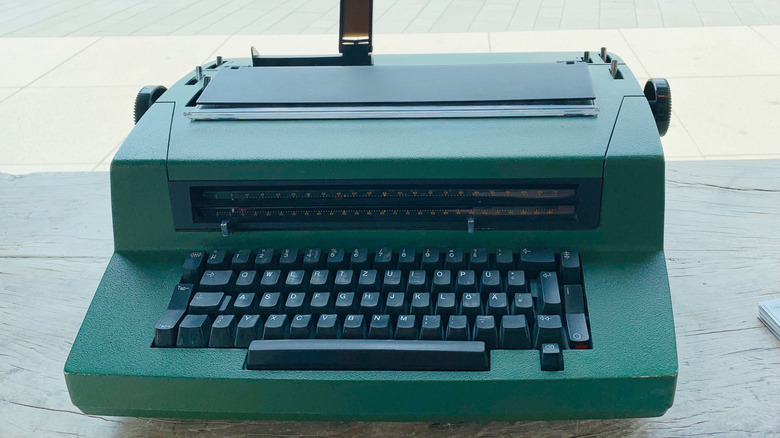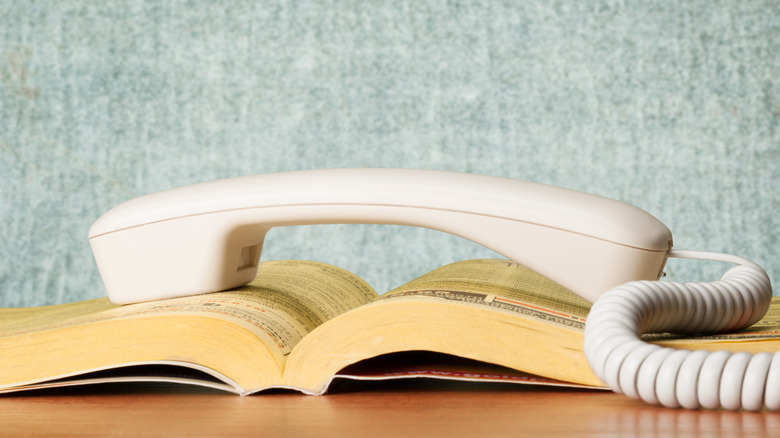'70s Household Items No One Uses Anymore
We didn't just change home design styles in the 1980s and '90s — it felt like we performed a full-on exorcism of the 1970s. Seemingly overnight, things that always made sense in our homes disappeared — admittedly, some took longer to exorcise than others. Avocado green shag carpet was among the first to go — thank goodness. But – we are actually sad to say — some household items from the '70s are not as easy to find these days, like vintage record players, landline wall phones, and the Atari VCS. These are items that, now, only the most avid collectors of all things vintage seem to have continued using.
The 1970s were a decade of earthy textures and colors in home design, but also a time of embracing new technology. And as quickly as things came into the home, they just as quickly left. You might even say the '70s were the very beginnings of throwaway culture. Single-use plastic was becoming extremely popular, and technology was showing signs of a fast-paced trajectory that wouldn't stop. This meant, for the first time, that household items weren't kept throughout the owner's lifetime — instead, they were discarded in favor of the newest fad or technology.
While there are a lot of things we look back on from the '70s and cringe, there are also items that are trending again out of a love of cozy nostalgia. Unfortunately, some vintage household items from this era might never return, because they are simply too impractical to use.
Answering machine
Long before voicemail and cell phones, there was the answering machine. The 1970s version of this tech marvel relied on tape cassettes to record a greeting and any incoming messages. Often, people recorded funny or interesting greetings as a way to express themselves. These machines were usually big, clunky, and sometimes difficult to figure out how to use. Over time, answering machines were replaced by voicemail, and now, of course, texting (because you don't call without texting first).
Rotary telephone
If you've never used a rotary phone, then you probably don't understand the pain of calling someone long-distance who had a lot of 0s in their phone number (it can change a person). While rotary telephones were still in use long after push-button models came on the scene, they fell out of regular use in the 1980s. However, rotary phones are seeing a revival of sorts among younger generations who want to go analog and add a vintage piece to their spaces, and some of these household items from the '70s may now be worth a lot of money.
Set of encyclopedias
Encyclopedias were what you went to when you wanted to look something up — They were the "Google" of the 1970s. And, if you had a set of encyclopedias in your home, it was most likely because your parents fell for the tactics of a door-to-door salesman and probably paid a pretty penny. These thick books were labeled by topic alphabetically and had enough information to help you accurately write an essay for school. Of course, encyclopedias became obsolete with the advent of the World Wide Web and personal computers in every home.
Long corded wall phone
Nothing brings back the nostalgia of '70s kitchen decor faster than seeing a wall telephone with a mile-long cord. If this phone wasn't in the kitchen, it was usually in a nearby hallway. Every teenager in the '70s knew why the cord on that phone was all tangled up and stretched out. And no matter how hard your mom tried, she could never get it to coil back into its original shape. Bonus if there was a nearby coat closet you could fit into to take a private call.
Waterbed
Is there anything more stereotypically 1970s than a waterbed? Waterbeds were invented in the late 1960s and became extremely popular in the '70s. They were actually considered much more comfortable than the regular spring mattresses of the time. And of course, waterbeds fit right in with the peak of the sexual revolution, and companies marketed it as such. In the '70s, it was considered the height of cool to have a waterbed.
Record player
Record players were a staple in many 1970s homes. They were often included in a console stereo system or as separate items to be featured on a display cabinet alongside other audio components. There was nothing quite like vinyl when it came to listening to your favorite rock, folk, or pop band. While vinyl records are still around today, they are usually collectors' items or relegated to really passionate music lovers. By the 1990s and early 2000s, record players were being replaced by CDs, MP3s, and eventually music streaming services.
Fondue pots
Fondue pots were introduced to the U.S. in 1964 and saw a continual rise in popularity during the 1970s. It wasn't uncommon for a fondue pot and various food items to be the centerpiece of a table during gatherings. Like many other food trends over the years, fondue started to decline in popularity in the later part of the decade and all but disappeared by the 1980s. It saw a re-imagining with the trend of chocolate fountains in the 1990s and with folks who love nostalgic food trends.
Ashtrays
Ashtrays used to be a common sight in almost every home in the decades leading up to the 1970s. Even if the homeowner didn't smoke, they provided ashtrays for their guests. They could be simple or even elaborate to the point of becoming part of the decor. By the 1970s, however (thanks to a 1964 U.S. Surgeon General's report), many people had begun to quit smoking indoors, and by the 1990s, ashtrays had almost completely disappeared from homes.
Clock radio
Many people who had clock radios in the '70s and '80s can probably hear this photo. The unmistakable sound of the alarm these things emitted was bound to wake even the soundest sleeper. The popular variety of clock radio for this era had flip numbers that made a distinct noise whenever the minute changed. Later, electronic digital clock radios (with the red display) began to emerge and replace this style in the '80s, but they still had an alarm that could wake the dead.
Console TV
The console TV wasn't just a television; it was a piece of furniture. These things were huge and heavy. They often contained more than just the TV, sometimes hiding a stereo or even an 8-track player. The console TV was the centerpiece of the den, creating a focal point for the family to gather 'round. But by the 1980s, these giant televisions were being replaced by sleeker, more stylish TVs that also disappeared when flat screens were introduced. If you want to keep that authentic retro aesthetic, add a vintage console to hide your modern tech with an easy hack.
8-track player
The 8-track player was a flash in the pan by modern technology standards — it was only around for about 20 years. Invented in 1964, 8-track tapes reached peak popularity in the '70s. But by 1982, record companies ceased releasing music on them in favor of cassette tapes. They were phased out because, to be honest, the technology was flawed. 8-tracks had a nasty habit of stopping in the middle of tracks. They would easily break, lose lubrication, and the tape would often come out.
Electric typewriter
In the '60s, the IBM Selectric came on the market and introduced a quieter, more reliable electric typewriter. By the '70s, these typewriters were a common sight in homes for office and school use. They were more portable than previous electric typewriters, and that made them more accessible. But like most tech on our list, electric typewriters slowly began to be replaced by word processors and PCs in the '80s and '90s. While some still enjoy them as a kitschy retro item, most people no longer know the pain of a jammed key or smeared White-Out.
Atari VCS
Long ago, before Xbox, PlayStation, or even the Nintendo NES was released in the U.S., there was Atari. The original Atari VCS (Video Computer System) was released to U.S. homes in 1977, changing the way families spent time together. Atari was the company that brought video games to the mainstream. Since then, home video game technology has progressed at an accelerated pace thanks to a small company in the '70s called Atari. Many modern gamers have never experienced what it's like to play games on the original Atari console, except for die-hard collectors.
Telephone book
The telephone book, depending on your location, could be a giant or small book full of personal, government, and business phone numbers and addresses. Usually found under a phone, on a small table in the hall, or in a home office, these books were invaluable. Another victim of the digital age, telephone books, were slowly phased out by the 2010s. With the rise of smartphones being more commonplace and instant access to information on the internet, you no longer needed this giant book to find your friend's phone number and address.
